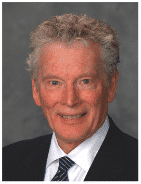By Dennis Van Vliet, AuD
I’ve had a little experience with automating scheduling and reporting of test results that extend back to the mid-1970s in my first job at the House Clinic (then the Otologic Medical Group.) Setting up templates and standardizing reporting formats can contribute to greater efficiency and optimization of communication. Today, I listen to the stories of my colleagues from across the country as they implement electronic medical records (EMR), and I cringe to think of how primitive those early efforts were, yet I am amazed at how similar some of the setup and organization is. What surprises me is how many times I hear the same stories.
I first heard about system-wide implementation of EMRs more than a decade ago as the Southern California Kaiser Permanente Medical Group prepared for changing their system over. Documenting patient visits and reporting of results required narrative, as well as graphic input to the system. Graphic representations of test results, such as audiograms, were scanned by hand and inserted into the patient records.
Today, when I have a conversation with a colleague from anywhere in the country, I hear the same comments coming up about developing narrative templates for reporting, and deciding on how to integrate the test data, such as audiograms, immittance, and real-ear test data. What I do not hear are comments about what advantages of prior experience the vendors of the EMRs are bringing to the table when they start with a new client. It sounds like the vendors are starting with an impoverished basic shell of a records system, and then building customized reporting for each new facility—without the benefit of what may have been learned from experience with similar environments.
As I said earlier, “I’ve had a little experience…” I’m simply commenting on what I hear from colleagues, and what sounds like a very inefficient approach to what is touted to be a change that will promote efficiency, and reduce duplication of effort.
The cynic in me thinks that the vendors must be on a decades-long gravy train of grants to implement this change, and there is no incentive to take advantage of prior knowledge. They can start with a very basic format, and use a time (and dollar) consuming process to build new reporting templates for every new facility they contract with. As a result, if a facility designs and implements an innovative recording method for audiograms, the knowledge isn’t shared with the next facility.
However, I’m not all cynic. The benefit-of-the-doubt observation would be that every system is unique and needs the opportunity to personalize the reporting to its own unique needs. In this case, I’m going with half-empty and declaring the efforts that I am hearing about sound more like an inefficient approach that is unnecessarily adding to the cost of medical care.
More Learning
Now that my rant is over, I’m thinking that I should take advantage of prior knowledge myself in an effort to improve performance in my professional activities.
I was at the American Auditory Society meeting in March. That’s where I heard so much about the electronic medical record changeover process in sidebar conversations. I always come away from the AAS meeting with a renewed sense of appreciation of hearing science and how bright clinicians and researchers are willing to share their knowledge.
For example, The Carhart Memorial Lecture by Richard J.H. Smith, MD, was about genetic testing for deafness, and how knowledge gained from the testing can be directly applied to patient management today. There was current and new information for me that will impact counseling and recommendations I make clinically. One head-slapper was the idea that the documented association of risk of falling and hearing loss may stem not only from inner ear function, but from distraction. The consumption of a limited amount of cognitive resources to make up for hearing loss may lead people to not pay as much attention to walking, resulting in a trip and fall accident. This never occurred to me before. As a result, I’ll change some of my counseling and resource material to include strategies that include avoiding walking and talking at the same time for some patients.
Also at AAS, Ruth Bentler, PhD, from the University of Iowa presented a fascinating study that looked at language development with matched sets of hearing-impaired children. One group was fitted with frequency narrowing strategy hearing aids; the other fitted with standard fitting techniques. There was no difference in the language abilities over time with either group. This well-designed observational study will help us make decisions about frequency narrowing applications in patients we encounter in our offices today.
The Final Word? Having access to prior knowledge—whether from peer reviewed literature, scientific conferences, discussions with peers, or trade journals—is an important part of our continuing education. Our responsibility as consumers of this information is to not only seek it out, but to critically evaluate the information and apply it judiciously.

|




